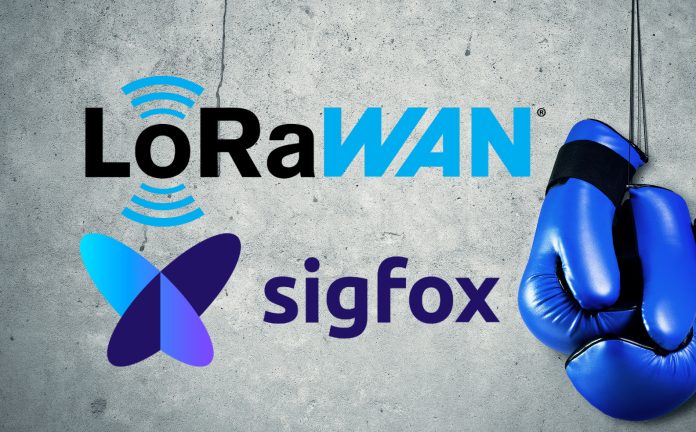Sigfox has officially joined the LoRa Alliance – as a contributing member, no less. The French-born ultra-narrowband IoT network tech – once (long ago) the darling of the European IoT startup scene, until its money-shredding decline and desperate fire-sale at the start of 2022 – has been shepherded into the rival LoRaWAN camp by its new parent, the IoT bravehearts at Singapore-based Unabiz, ably assisted by LoRaWAN old boy Rémi Lorrain.
Really, who saw this happening 18 months ago, when Sigfox was in the gutter? Who saw it happening two years ago, when LoRaWAN was still its arch nemesis at the noisy low-power wide-area (LPWAN) end of the IoT game – whose fortunes appeared to correspond so oppositely with its own? One could argue Sigfox’s options were limited, as its original run came to an end – to the point that joining with the enemy was its only one. But it is still something.
Indeed, it is something even after the Unabiz team, headed by boyhood pals Henri Bong and Philippe Chiu, has rushed through 2023 with crossover deals with key operatives in the LoRaWAN regime, including Actility in France, The Things Industries in the Netherlands, and Senet in the US. Most of these have been sympathetic to the idea of IoT convergence for some years. Ohers, like LORIOT in Switzerland, have been doubling-up on LPWAN for yonks.
LORIOT is a mainstay in the MIOTY scene, as well; MIOTY is the go-to-market brand for the Johnny-come-lately telegram-splitting ultra-narrowband (TS-UNB) standard, being pitched as an alternative for industrial IoT. Unabiz is also in talks with the Wi-SUN Alliance, in charge of the Wi-SUN mesh protocol for ‘smart utility networks’ (SUN). Last week, it signed with Soracom, an investor already, to combine cellular IoT (mostly LTE-M) into its LPWAN mix.
But the LoRa Alliance, representing the likes of Actility and Senet, has been more defiant about the singularity of its preferred LPWAN standard. Its acceptance of Sigfox into the fold is telling. Its collaboration is the big one for Unabiz, in ways, and confirms its vision for converged IoT networks is well accepted – even if the LoRaWAN crowd will maintain that the biggest gains, in terms of traffic onto networks, are mostly-all going the way of its members.
A key decision for Sigfox operators and Sigfox developers, after the strictures imposed by its former parent, was to release the Sigfox device library code into the public domain, in order to “build bridges with all communication technologies including”, noted Unabiz. Another key decision, perhaps, was to recruit Rémi Lorrain, formerly vice chair for the LoRa Alliance in the EMEA region, and director of global LoRaWAN networks at Semtech.
Lorrain joined in June. He has come full circle, actually; he was in charge of operations and networks at Sigfox from 2015 through 2017. Unabiz said it will work with its opposite ecosystem as a LoRa Alliance member to deliver “LoRaWAN solutions… through global channels to market”. Which backs up claims that most new IoT traffic will go one way. Unabiz said it is focused on collaborating in the building and facilities management vertical, in particular.
Henri Bong, co-founder and chief executive at Unabiz, said: “The first step towards technology convergence is to understand our differences. As a firm believer in an open ecosystem, Unabiz has worked with various IoT technologies in the last seven years, and we understand well that each customer should have the freedom to leverage the uniqueness of each LPWAN in order to capture maximum value from their massive IoT projects.”
Lorrain commented: “We look forward to contributing to the work of the LoRa Alliance committees to drive massive IoT with the adoption of LoRaWAN in our IoT connectivity portfolio, complementing Sigfox, cellular and satellite.”
Donna Moore, chief executive and chair at the LoRa Alliance, said: “I am pleased to welcome Unabiz to the LoRa Alliance. Solutions providers are a key driver of LoRaWAN adoption and scaled deployments. Unabiz’s viewpoints on multi-protocol business models align with the LoRa Alliance’s strategy that complementary protocols are required to address massive IoT use-case solutions.”

